I've been getting some listening time in with the Hanze HiFi HAT Turntable Power Supply on my Classic Turntable Company hot-rodded Garrard 301, so I thought I'd offer you some first impressions as I've started to get familiar with it.
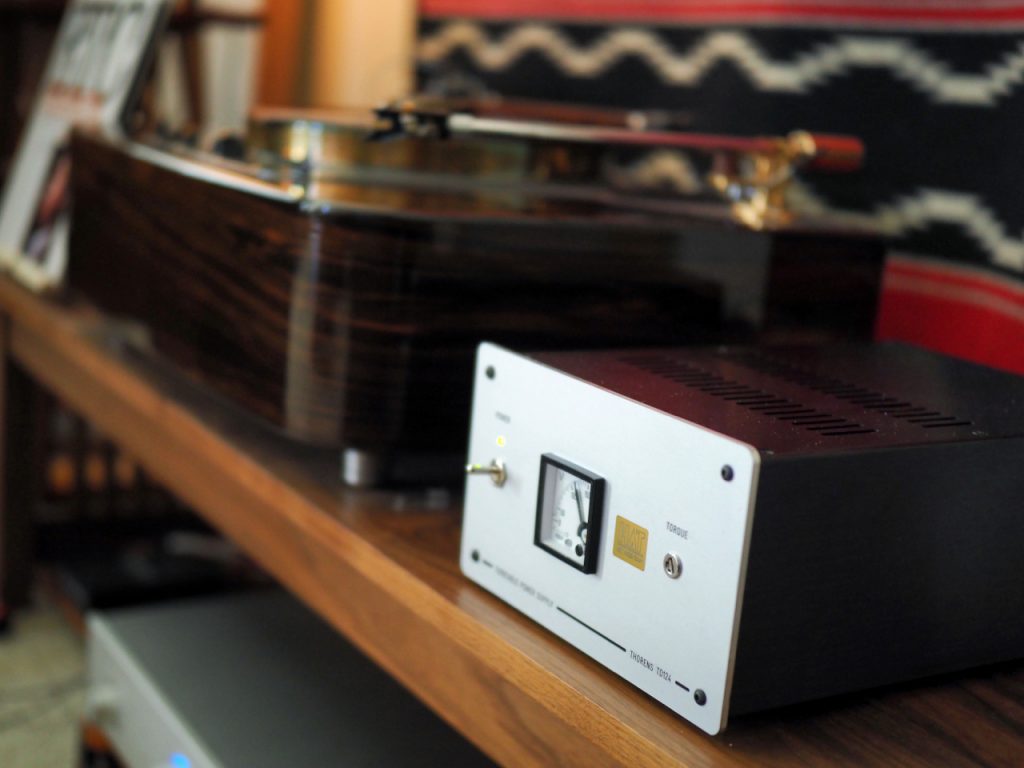
Before I describe to you the installation and setup of the HAT Turntable Power Supply (TPS from now on) on my CTC Garrard 301, let me tell you about how the AC currently arrives at my CTC Garrard 301's Garrard 401 turntable motor.
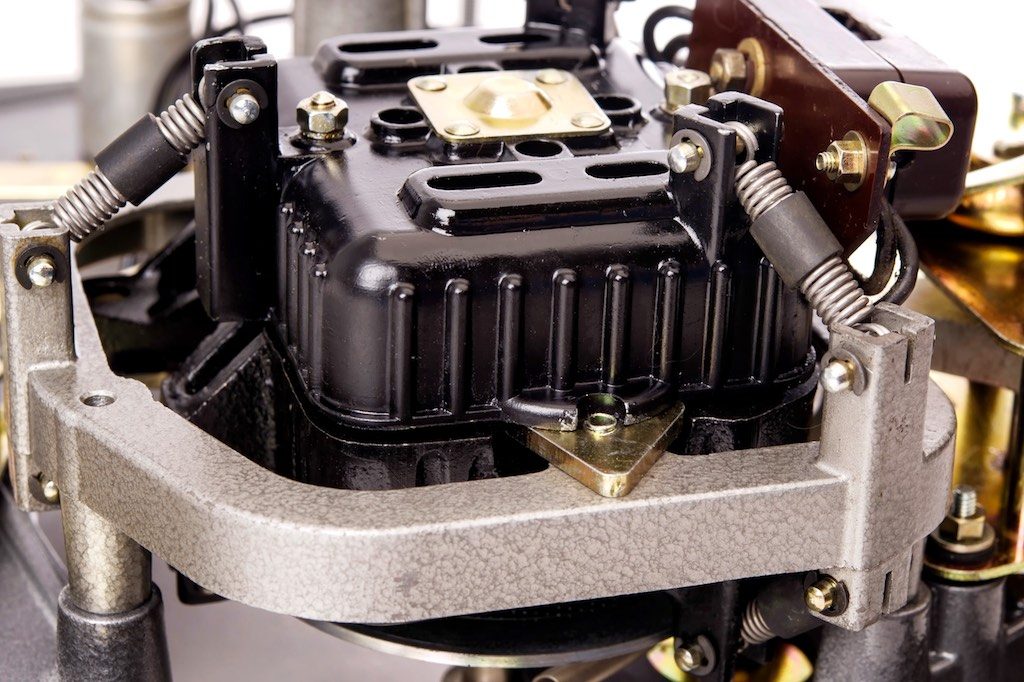
Yes, you read that right, my CTC Garrard 301 uses a Garrard 401 motor (above).
I found when reading the circa 1967 paper by Garrard's Chief Engineer, E.W. Mortimer, Design of Transcription Turntables, about the design of the Garrard 401, that Garrard improved the motor assembly of the 401 to the point where it was on par with most of the cutting lathes of the time in terms of rumble, wow, and flutter.
The 301's motor was good too, but the 401's was quite a bit better, which is why Garrard 301 aficionados who want better performance from their 301 replace the 301 motor with a 401 motor, which is what I did, and which you can read more about HERE.
Garrard replaced the aluminum motor housing of the 301 with a heavy cast iron housing in the 401 to help reduce vibration of the electric motor, and to provide magnetic screening.
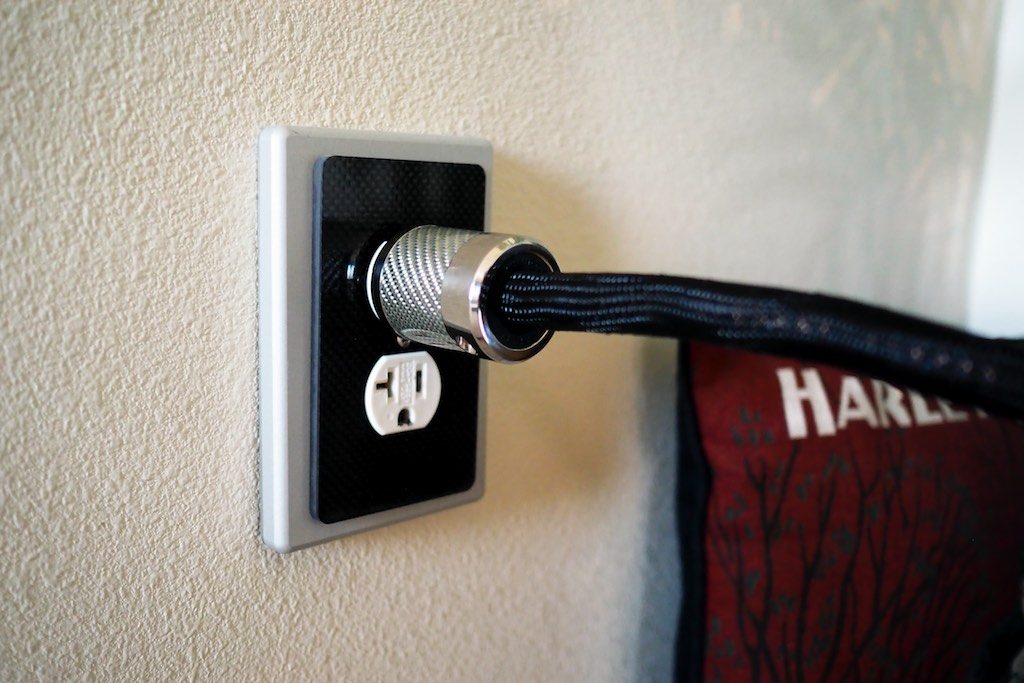
Now back to the AC path to my CTC Garrard 301's motor, which starts at my wall AC outlet, that consists of the Acoustic Revive CB-1DB receptacle base plate, the Acoustic Revive CFRP-1F carbon fiber outlet plate, and the Acoustic Revive modified Oyaide R-1 receptacle (above).
In case you are new to this sort of wall outlet upgrade, let me mention that an AC wall outlet upgrade like I use offers an easily audible improvement when installed into a standard wall outlet. You can read more about the Acoustic Revive CB-1DB receptacle base plate and the Acoustic Revive CFRP-1F carbon fiber outlet plate HERE, and the Acoustic Revive modified Oyaide R-1 receptacle HERE (you'll have to scroll down to the relevant parts of the reviews).
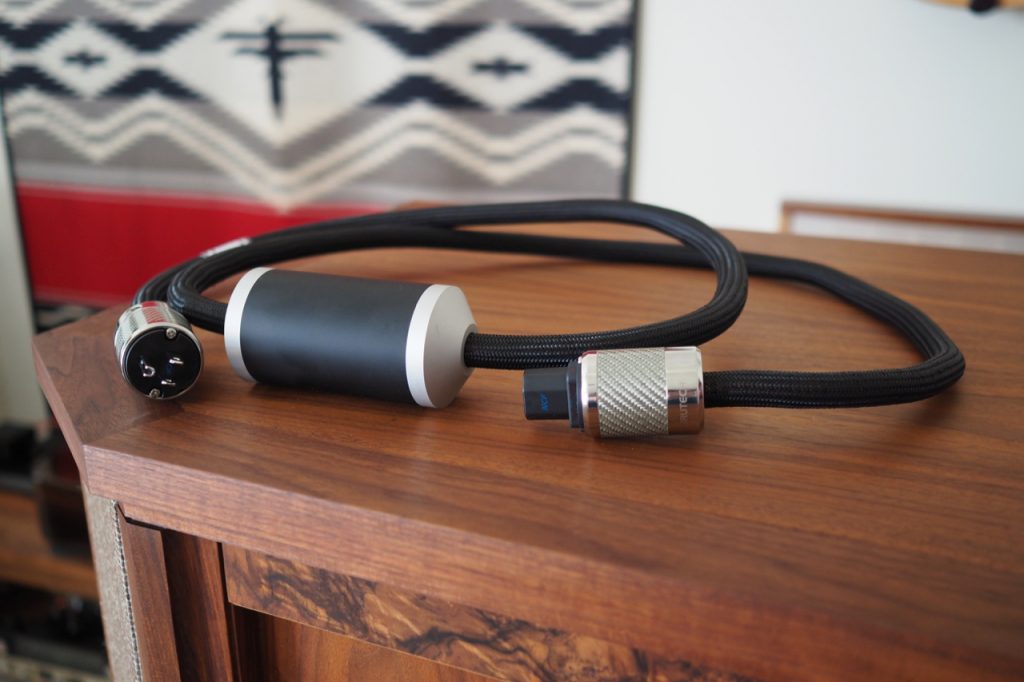
Acoustic Revive Absolute Power Cable
The wall AC then leaves the outlet through an Acoustic Revive Absolute Power Cable (review HERE) and flows to an Acoustic Revive Absolute NCF Power Distributor (review HERE).

From the Acoustic Revive Absolute NCF Power Distributor the AC is distributed to all of the components in my system via their AC power cords, which in the case of the CTC Garrard 301 is a Furutech 320Ag power cable that plugs into an Acoustic Revive RAS-14-TripleC NCF Power Stabilizer (review HERE).
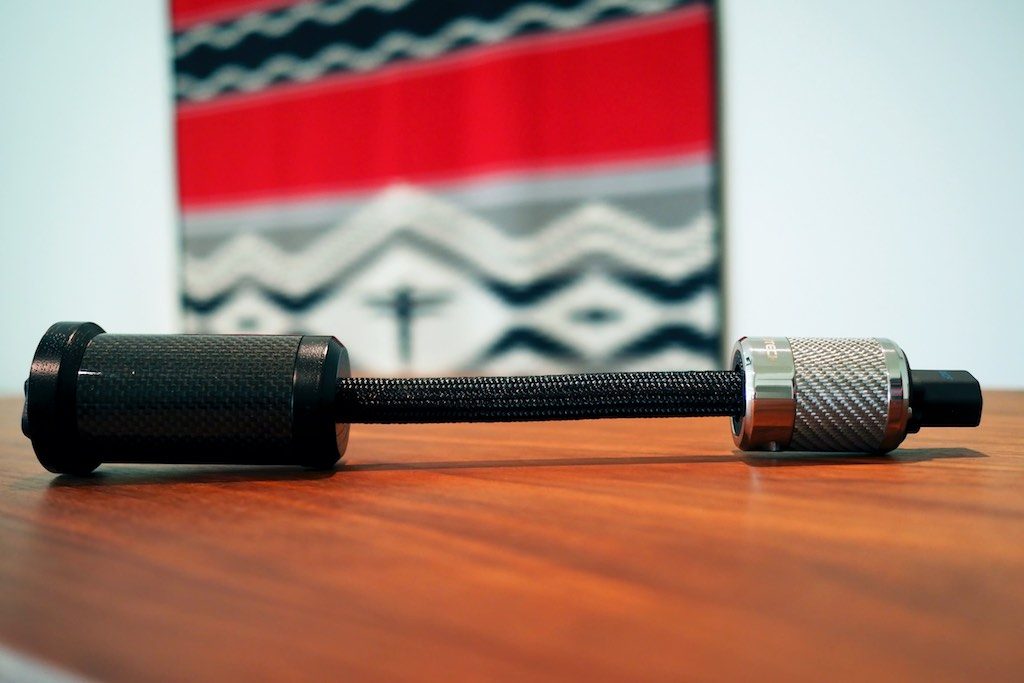
Acoustic Revive RAS-14 TripleC NCF.
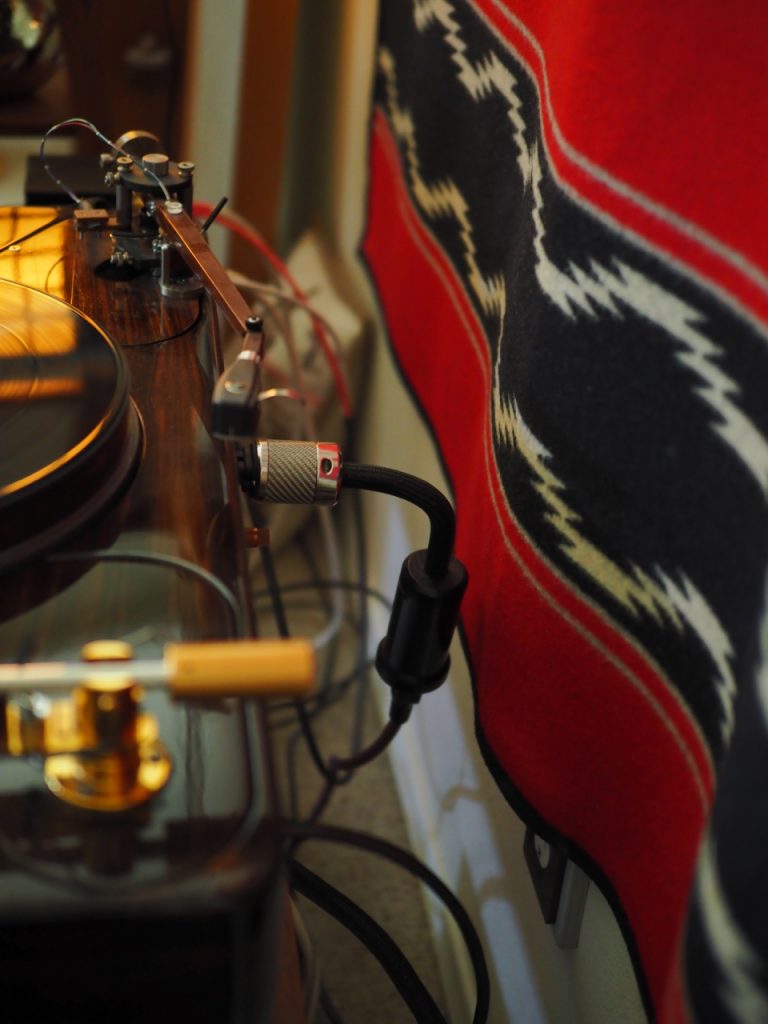
All of the Acoustic Revive products that feed AC to my turntable are passive devices designed to minimize AC line noise and vibration, which results in a significant improvement in audible performance. The Acoustic Revive components work really really well, and they are very exotic, ultra-quality, and ultra-expensive devices in general.
I wanted to tell you all that because the wall AC arriving at my CTC Garrard 301 is already in relatively good shape due to the presence of the Acoustic Revive products, so now you know that the AC going into the Hanze HiFi HAT TPS is also first rate.
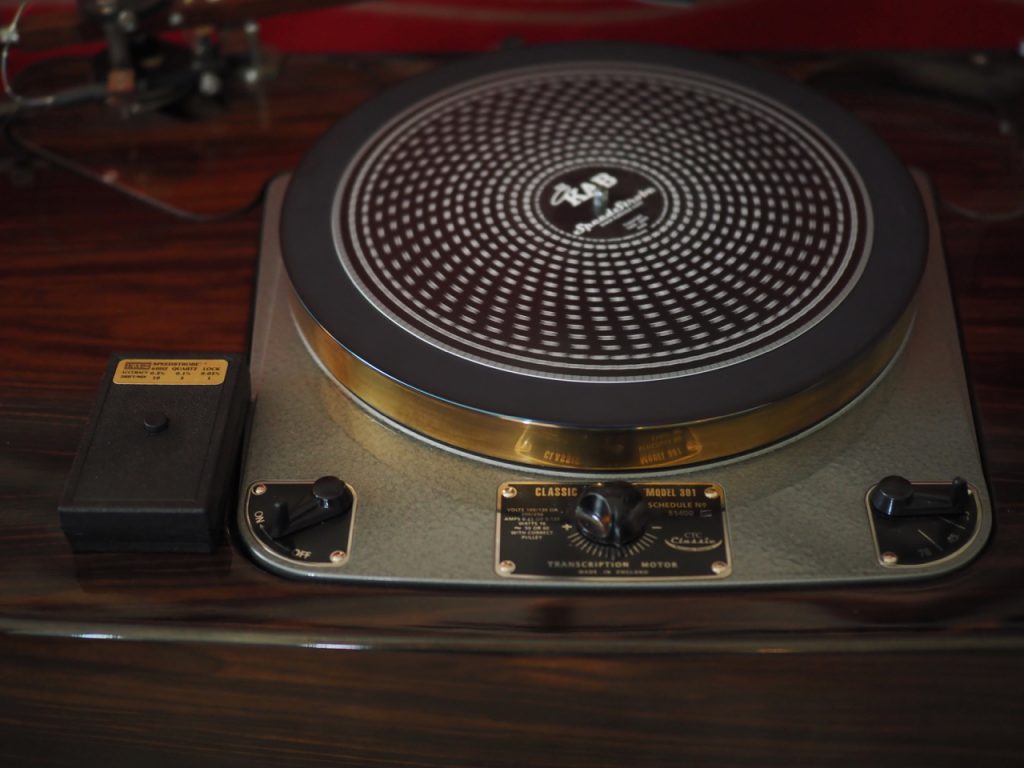
At the time I wrote this, I measured 120V at my wall outlet, ± a few tenths of a volt. However, line voltage can vary a bit during an average day depending on how much load on the grid there is at a given time of day.
I powered up my CTC Garrard and let the motor warm up for 10 minutes, and then adjusted the speed of my CTC Garrard 301 with a KAB Speed Strobe so that speed was spot-on for 33 1/3 RPM LPs, which was achieved at one hash mark to the minus side of the transcription motor speed control on the Garrard (the center knob).
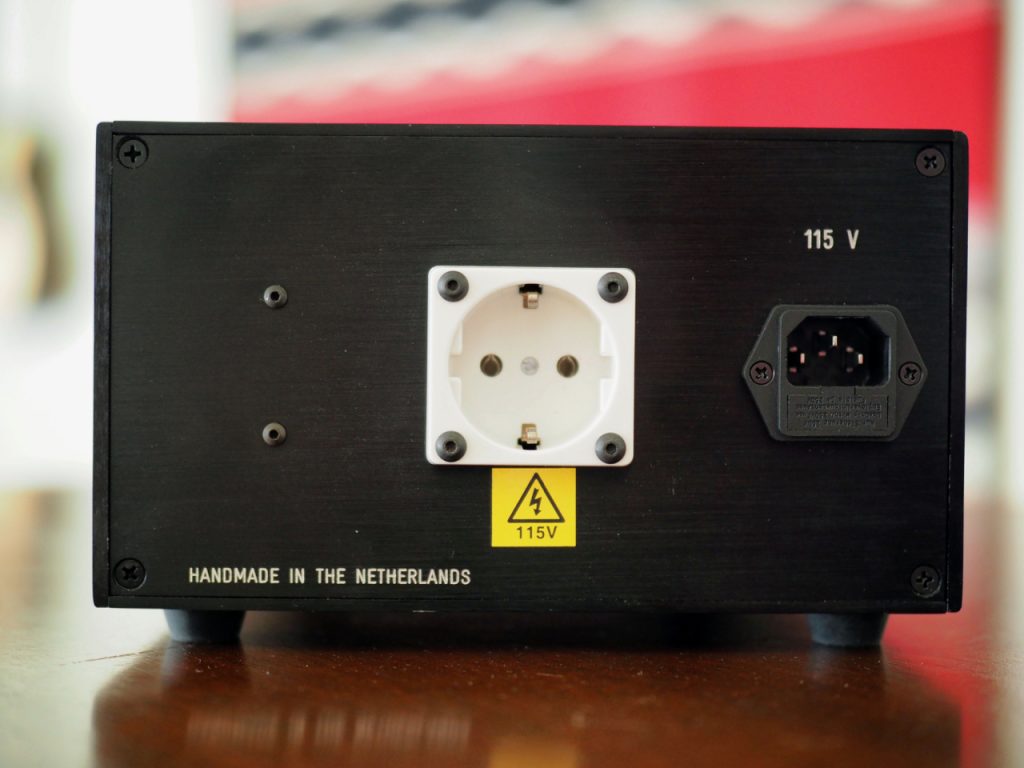
The next step was to insert the Hanze HiFi HAT TPS into the system.

To insert the Hanze HiFi HAT TPS into the system, my first step was to install a Euro to US adapter into the European-style Type F socket on the back panel of the HAT TPS, so I can use my usual Furutech 320Ag power cable and Acoustic Revive RAS-14-TripleC NCF Power Stabilizer combo to connect to my CTC Garrard 301 (above center).
Future HAT TPS's that ship to North America will use a standard North American AC inlet so you won't need to use an adapter like I did.
Then I installed my DIY Duelund 600V DCA12GA power cable into the HAT TPS's wall AC inlet (left side in the photo above), and then powered up the HAT TPS.
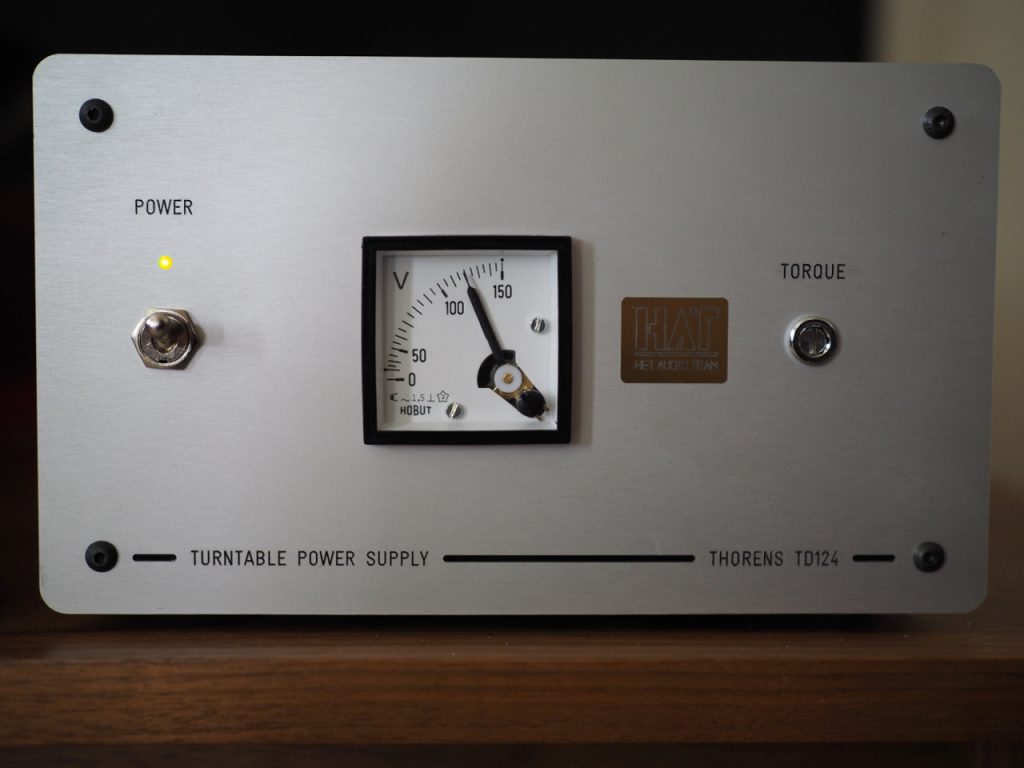
Now that the HAT TPS was installed, I then checked the CTC Garrard 301's speed again with the KAB Speed Strobe and found that it was not running at the correct speed - to be expected - and so then adjusted the torque adjustment pot on the right side HAT TPS until the correct speed was achieved.
With the KAB Speed Strobe indicating a steady 33 1/3 RPM, the voltage reading on the HAT TPS was just slightly shy of 120V.
Before I tell you what I heard with the HAT TPS powering my CTC Garrard 301, let's have Jaap Pees tell us what the HAT TPS does with the wall AC that comes into it, to give you a better idea of how it works to improve the performance of a turntable.
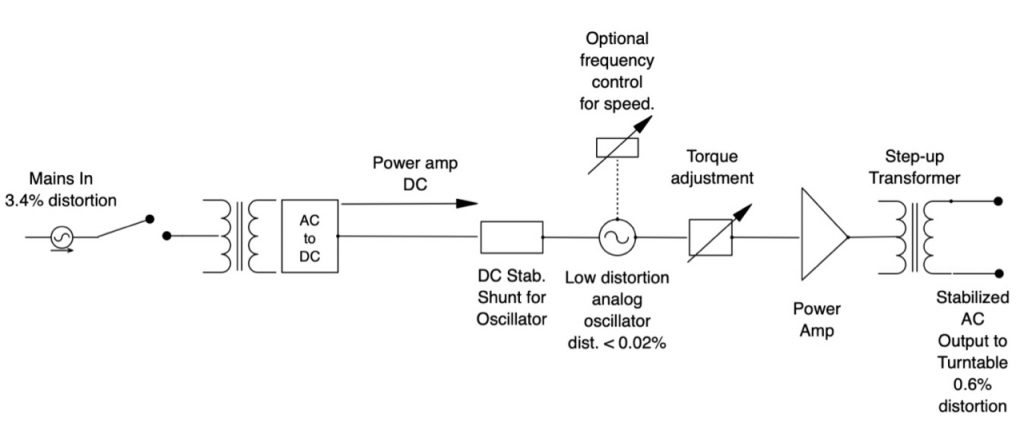
Note: the HAT TPS being reviewed does not have the optional frequency control for speed shown above.
"The mains comes in by a two pole switch to the primary side from the mains step-down transformer, where the secondary side <voltage AC> is connected to the rectifier stage/capacitor, which delivers the DC voltage for the power amp and the stabilizing voltage stage for the analog oscillator."
"This voltage stabilizer stage is very important as it needs to have a very low noise level and a good stabilization factor because it feeds the 60Hz analog oscillator, and the output from this analog oscillator is independent from the variations of mains supply!"
"The output voltage from the analog oscillator goes to the torque adjustment, and here the user can vary the output voltage for optimum drive, and after that the low voltage from the analog oscillator is amplified from about 2 volts to 115 volts."
"This occurs in two stages, first with the power amplifier which drives the secondary side of the power output step-up transformer, and secondly where the primary side of the step-up transformer drives the turntable motor."
"As you can see the turntable motor is totally isolated from the mains supply and runs on a newly generated sine wave with low distortion and a stable voltage/frequency."
"For example, the mains voltage here in the Netherlands has a gross distortion of about 3-4 % THD, while the voltage coming from the HAT turntable power supply has a clean sine wave output with about 0.6% THD."

I am very familiar with Gillian Welch's and David Rawlings' album The Harrow & The Harvest, having used it as a reference in many reviews, so I thought that would be a good place to start my comparative listening session.
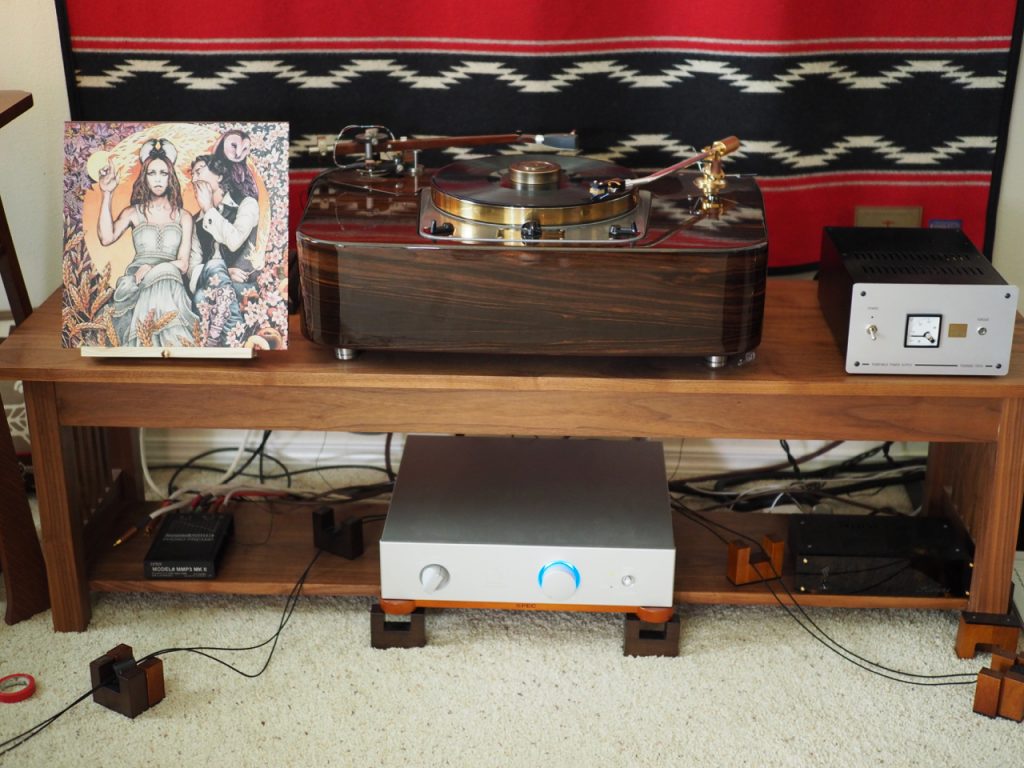
First, I did some listening to The Harrow & The Harvest with the wall AC supplying the CTC Garrard 301 directly, and the Hanze HiFi HAT TPS out of the system (above).

Then I added the Hanze HiFi HAT TPS back into the system to supply the AC to the CTC Garrard 301 and did some more listening (above).
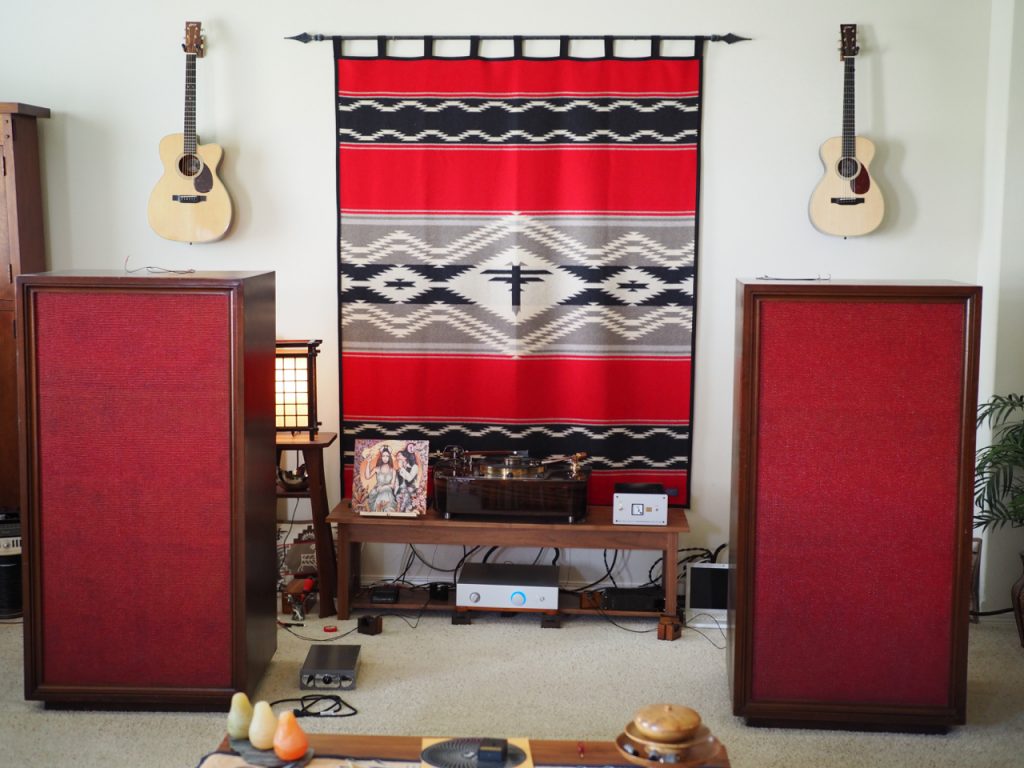
The differences I heard between the AC wall outlet and the Hanze HiFi HAT TPS providing the AC to my CTC Garrard 301 were subtle while listening to The Harrow & The Harvest.
I had to listen carefully with and without the Hanze HiFi HAT TPS in the system a number of times before I could reliably hear and articulate the differences in performance it brought to my CTC Garrard 301 playing The Harrow & The Harvest.
Specifically, the guitar bass strings response were a little more controlled and well defined, Gillian's vocals were a little richer and more natural sounding. Note articulation of David's crosspicking was a little better defined. Imaging was slightly more vivid, the separation between Gillian's and David's harmonies were slightly more discernable.
More generally, the overall sound seemed a little bit more musically natural, a little more coherent, and a little more well balanced overall, with the Hanze HiFi HAT TPS providing the AC to my CTC Garrard 301 while listening to The Harrow & The Harvest.
The performance improvement wrought by the Hanze HiFi HAT TPS was subtle but noticeable on my CTC Garrard 301 while playing The Harrow & The Harvest, and I did prefer the performance with the Hanze HiFi HAT TPS in the system.
I decided it was time to switch musical gears and listen to something else to see if I would get additional insights about the Hanze HiFi HAT TPS providing AC to my CTC Garrard 301.
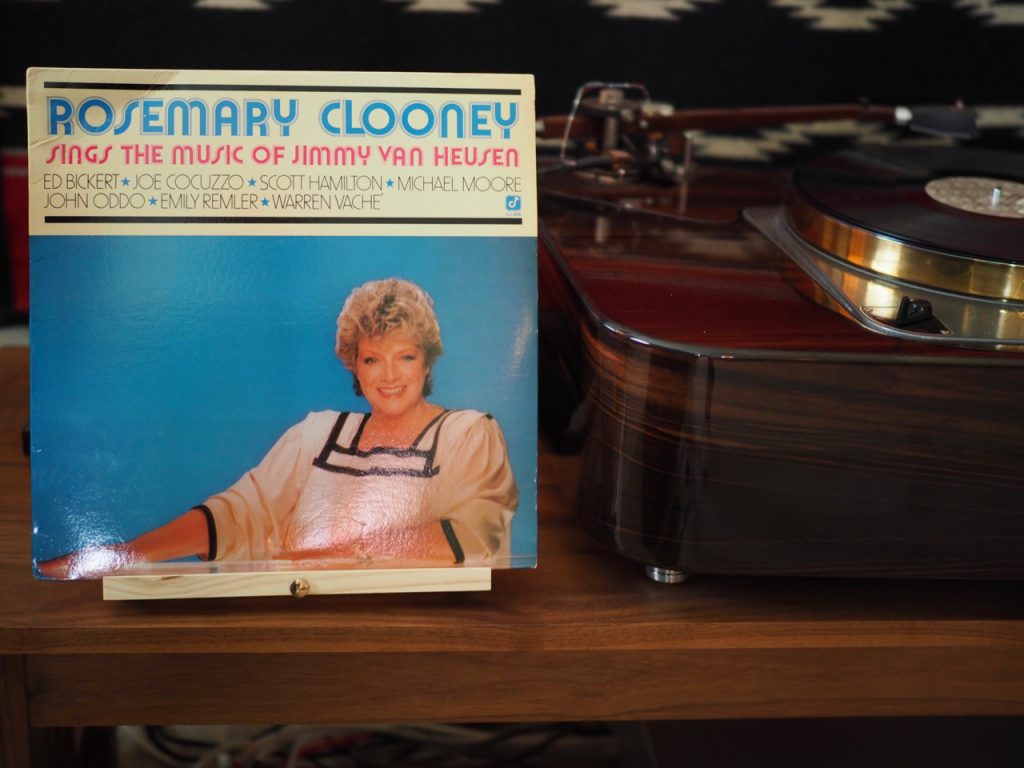
Next up for a listen was Rosemary Clooney's Rosemary Clooney Sings the Music of Jimmy Van Heusen, featuring superb jazz guitarists Ed Bickert and Emily Remler, and Joe Cocuzzo on drums, Scott Hamilton on tenor sax, Michael Moore on bass, John Oddo on piano, and Warren Vache on cornet.
For those who are interested in such things, Rosemary Clooney is actor George Clooney's auntie. Artistic talent definitely runs in the family!
I listened to Rosemary Clooney Sings the Music of Jimmy Van Heusen the same way I did The Harrow & The Harvest. I listened comparatively back & forth with the Hanze HiFi HAT TPS in and out of the system to see if I could gain any new insights to its performance on my CTC Garrard 301.
For whatever reason, with Rosemary Clooney Sings the Music of Jimmy Van Heusen the difference between having the Hanze HiFi HAT TPS in and out of the system was more immediately evident than with The Harrow & The Harvest.
Again, generally, the overall sound seemed a little bit more musically natural, a little more coherent, and a little more well balanced overall, with the Hanze HiFi HAT TPS providing the AC to my CTC Garrard 301.
Where I noticed the primary improvements with the Hanze HiFi HAT TPS in the system were not so much with the instruments and vocals, where I noticed subtle improvements as with The Harrow & The Harvest, but rather with recording artifacts like the sense of acoustic space and soundstage layering, which were noticeably improved.
I'll continue to listen to more albums and report on what I hear, but overall I like the improvements that I'm hearing with the Hanze HiFi HAT TPS providing AC to my CTC Garrard 301, although generally speaking what I am hearing are relatively subtle improvements in performance.
I should mention that I have also tried several power cords with the Hanze HiFi HAT TPS, and power cords make a difference in overall performance similar to what you would hear with a power amplifier or preamplifier, and I'll be experimenting with power cords a bit more to find out what provides the best match.

So my first impressions are that the Hanze HiFi HAT TPS provides a noticeable but subtle improvement to the performance of my CTC Garrard 301, and I prefer having it in the system to not having it in the system.
Next I'll listen to the Hanze HiFi HAT TPS on my Thorens TD124 in my vintage Altec A5 Voice of the Theatre audio-visual system and report back on some first impressions from that listening session.
I suspect the performance improvement the Hanze HiFi HAT TPS brings to the game will be more obvious in the A5 system with my Thorens TD124, as that system doesn't have the additional noise reducing attributes the Acoustic Revive CB-1DB receptacle base plate, Acoustic Revive CFRP-1F carbon fiber outlet plate, Acoustic Revive modified Oyaide R-1 receptacle, Acoustic Revive Absolute Power Cable, and Acoustic Revive Absolute NCF Power Distributor brings to the game.
As always, thanks for stopping by, and may the tone be with you!





























